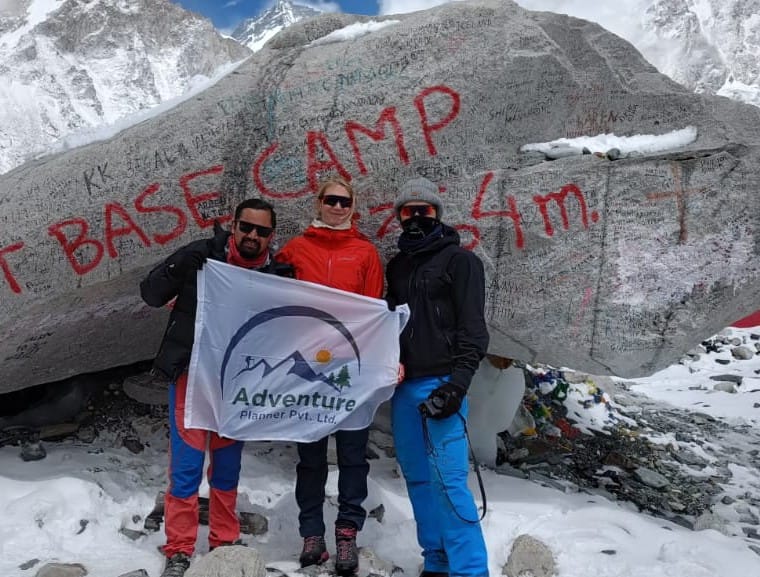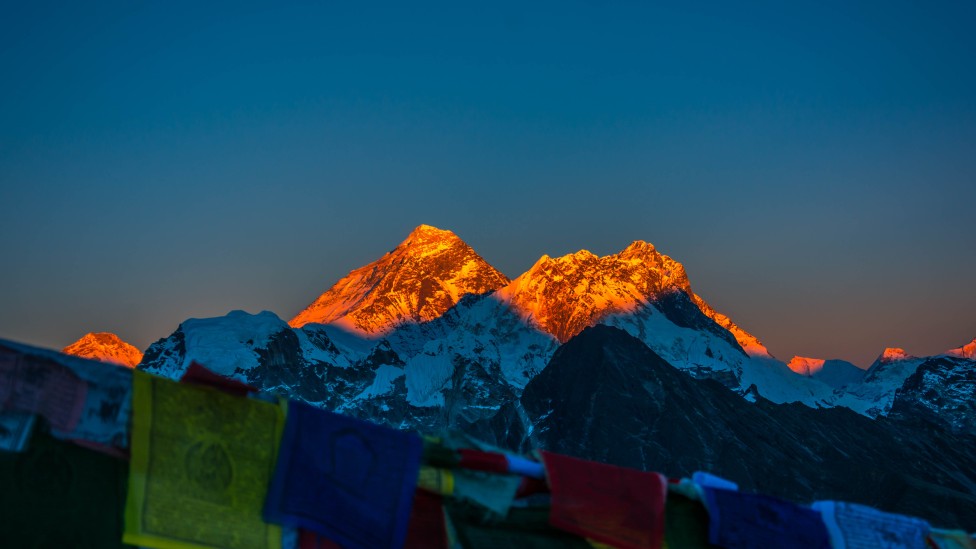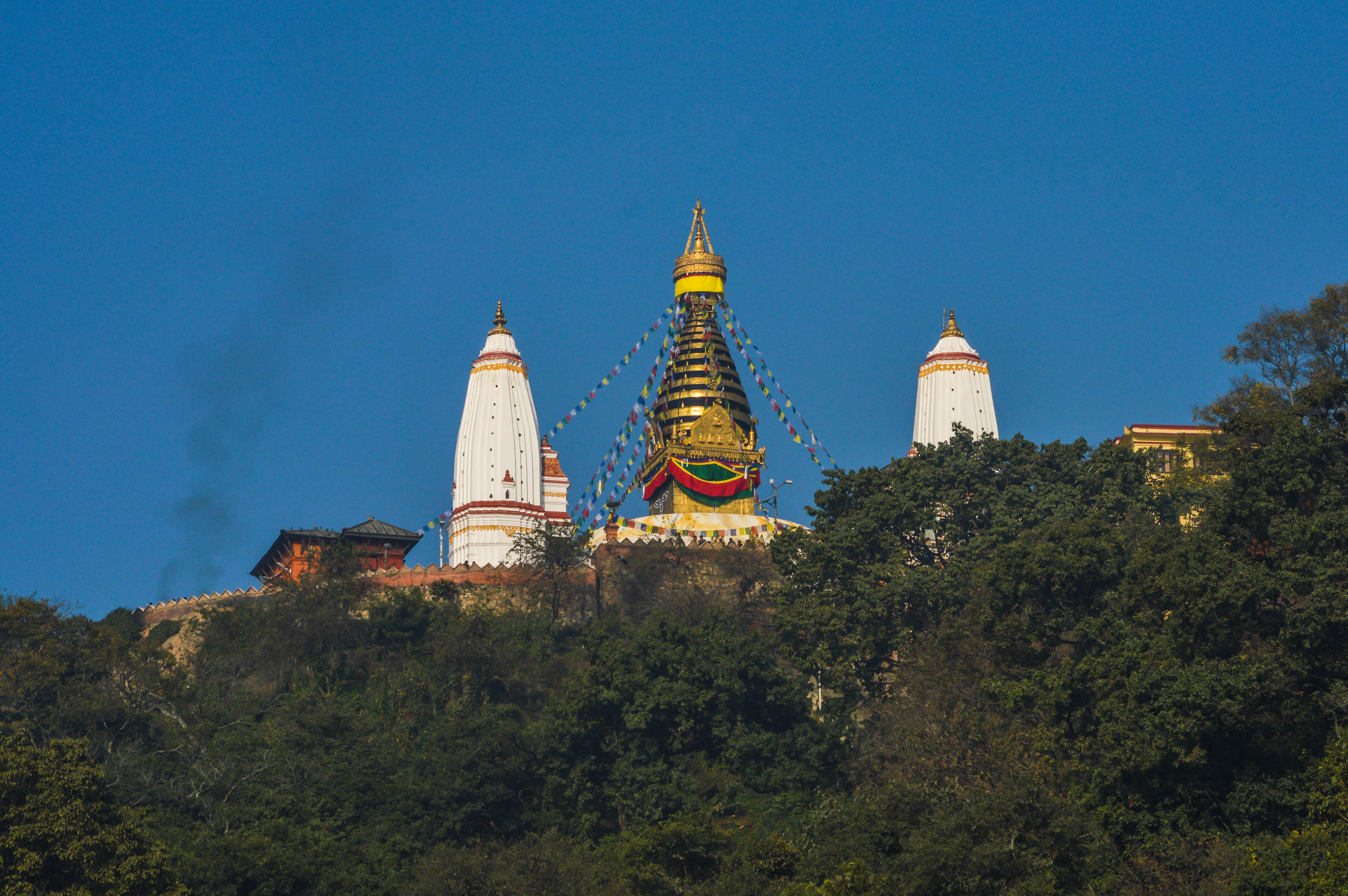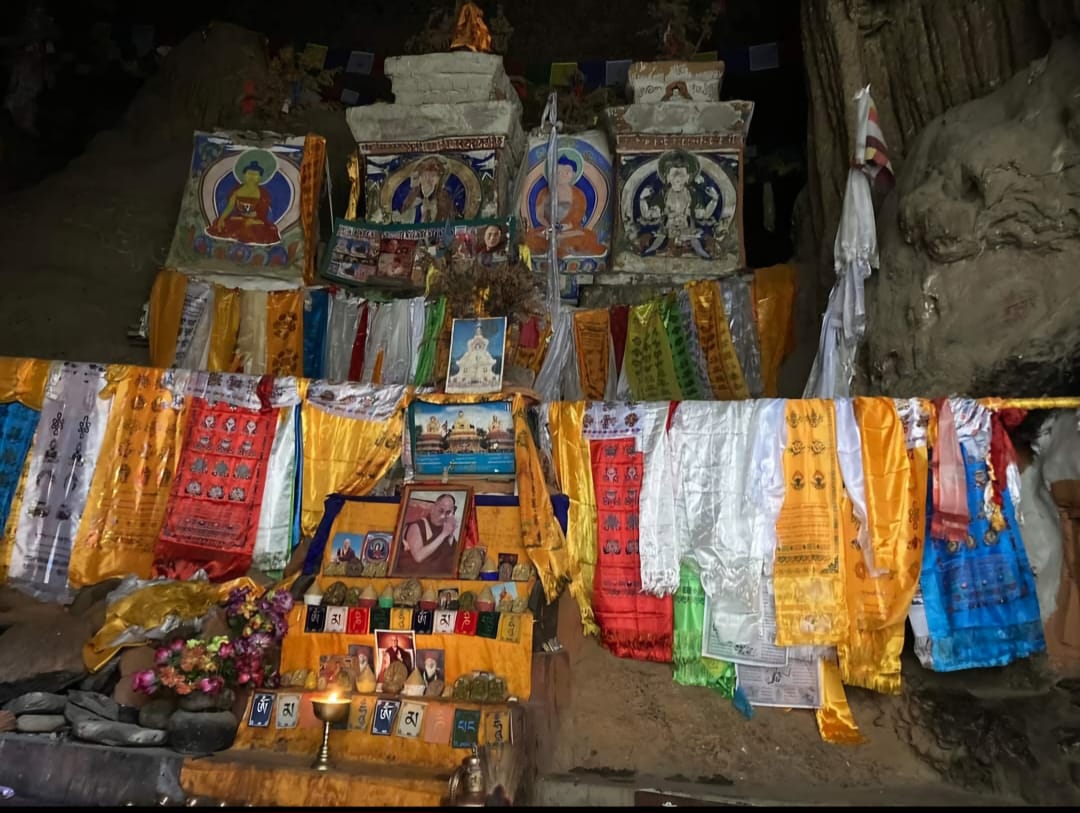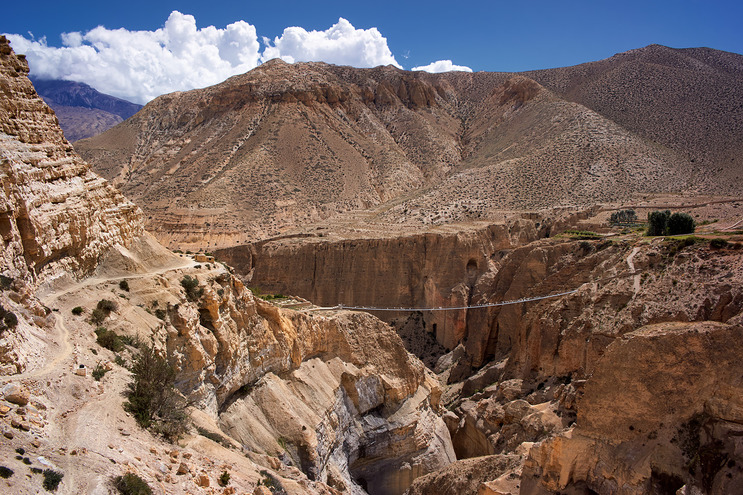The Everest trek is not just a journey; it’s a profound experience that leaves a lasting mark on your soul. Every step along this iconic trail unfolds a story of natural wonder, cultural richness, and personal achievement. Whether you’re a seasoned trekker or a first-timer, you’ll find that no moment on this journey is wasted. The Everest Trek offers breathtaking views and unforgettable experiences. Here are some highlights you definitely shouldn’t miss out on while traveling on Everest Base Camp Trek (EBC Trek).
Lukla: The Gateway to the Himalayas
Known as the gateway to Everest, arriving in Lukla with its stunning mountain views sets the tone for the adventure ahead.
Nestled at an altitude of 2,860 meters, Lukla is more than just a starting point for the Everest trek—it's an experience in itself. Known as the "Gateway to Everest," this small town in the Khumbu region of Nepal sets the tone for the thrilling adventure ahead.
- The Thrill of Lukla Airport
Lukla is home to Tenzing-Hillary Airport, famously dubbed one of the most dangerous airports in the world. With its short runway perched on a cliffside, landing here is a heart-pounding experience that trekkers often recount as a highlight of their journey. As you disembark, the crisp mountain air and the breathtaking views of the surrounding peaks instantly remind you of why you're here.
- A Bustling Hub for Trekkers
Lukla buzzes with the energy of adventurers from across the globe. The streets are lined with lodges, gear shops, and cozy cafes offering everything from trekking essentials to a warm cup of masala tea. The town exudes an infectious enthusiasm, with seasoned trekkers sharing stories and first-timers brimming with anticipation.
- A Glimpse into Sherpa Culture
Lukla offers an early taste of the rich Sherpa culture that defines the Khumbu region. The warm hospitality of the locals, their colorful prayer flags fluttering in the breeze, and the sound of Buddhist chants from nearby monasteries create a spiritual ambiance that stays with you throughout the trek.
- Gateway to Scenic Trails
From Lukla, the journey to Everest Base Camp begins. Trekkers follow a trail that winds through rhododendron forests, suspension bridges, and picturesque villages like Phakding and Namche Bazaar. Each step brings you closer to the towering peaks, but Lukla remains the cherished starting point of it all.
Why does Lukla stay in Your Heart?
Lukla isn’t just a pit stop—it’s a reminder of the incredible journey you’re about to undertake. It’s where excitement meets serenity, and the mountains whisper the promise of adventure. Whether it’s your first trek or your tenth, Lukla’s charm never fades.
Namche Bazaar: The Heart of the Himalayas
Nestled at 3,440 meters above sea level, Namche Bazaar is more than just a village—it’s the cultural, economic, and social hub of the Khumbu region. Often referred to as the “Gateway to Everest,” this vibrant settlement is a vital stop on the trek to Everest Base Camp.
- A Thriving Marketplace in the Mountains
Namche Bazaar has long been a trading post where local Sherpas and Tibetan traders exchange goods, from traditional crafts to imported essentials. Today, it retains its bustling market charm, offering trekkers a chance to stock up on supplies or souvenirs. Saturdays are especially lively, with a weekly market showcasing everything from yak cheese to trekking gear.
- A Blend of Culture and Comfort
Namche uniquely blends tradition with modernity. Its teahouses and lodges cater to trekkers with warm hospitality and surprising comforts, including bakeries serving fresh pastries and cafes with Wi-Fi. Amid these conveniences, the spirit of Sherpa culture remains strong, evident in the local monasteries, traditional architecture, and the ever-present prayer flags fluttering in the wind.
- Gateway to Spectacular Views
Namche is a perfect place to acclimatize and take in breathtaking views. The village itself is set in a horseshoe-shaped amphitheater, offering stunning vistas of peaks like Thamserku and Kongde Ri. A short hike to the Everest View Hotel rewards trekkers with their first glimpse of Everest and Ama Dablam, an awe-inspiring preview of what’s to come.
- Acclimatization and Exploration
Namche is a common stop for trekkers to adjust to the altitude. During acclimatization days, visitors can explore nearby attractions like the Sagarmatha National Park Visitor Center, which provides insight into the region’s history, flora, and fauna. The nearby Khumjung village, home to a revered monastery and the famed “Yeti scalp,” offers a fascinating cultural detour.
Why Namche Bazaar Leaves a Lasting Impression?
Namche Bazaar is more than just a waypoint—it’s an unforgettable destination where trekkers connect with the mountains and the people who call them home. Its vibrant energy, stunning landscapes, and rich cultural experiences make it a cherished memory for everyone who passes through.
Tengboche Monastery: The Spiritual Heart of the Everest Region
Tucked away at an altitude of 3,867 meters, Tengboche Monastery is a serene and spiritual haven amidst the towering peaks of the Himalayas. This iconic Buddhist monastery, also known as Thyangboche, is a must-visit landmark for trekkers on their way to Everest Base Camp.
- A Majestic Setting
Surrounded by panoramic views of Everest, Ama Dablam, Nuptse, and Lhotse, Tengboche Monastery’s location is nothing short of magical. The grandeur of these peaks forms a breathtaking backdrop, making it one of the most picturesque spots on the trek. The tranquility of the setting enhances the spiritual experience, inviting reflection and peace.
The History and Significance of Tengboche Monestry
Built-in 1916 by Lama Gulu, the monastery has become the spiritual center of the Khumbu region. Though it was rebuilt after a devastating fire in 1989, it has retained its charm and historical importance. Tengboche Monastery is an integral part of the Sherpa community, hosting annual festivals such as Mani Rimdu, a vibrant celebration of Buddhist rituals, music, and masked dances.
- A Spiritual Experience for Trekkers
Tengboche offers more than just spectacular views—it’s a place where trekkers connect with the spiritual heritage of the Himalayas. Visitors can attend morning or evening prayers, a mesmerizing experience as the monks chant mantras amidst the gentle flicker of butter lamps. These moments provide a sense of calm and connection that is hard to find elsewhere.
Tengboche Monastery: Gateway to Everest
Tengboche Monastery serves as a vital stop on the trek to Everest Base Camp. It’s both a resting point and an inspiration for the journey ahead. Many trekkers take time to explore the monastery, soaking in its spiritual ambiance before continuing their ascent into the rugged terrain of the Himalayas.
- A Memory to Treasure
Tengboche Monastery is more than just a waypoint; it’s a sanctuary that leaves an indelible mark on all who visit. The fusion of natural beauty and spiritual serenity makes it a highlight of the Everest trek, reminding visitors that the journey is as much about inner discovery as it is about reaching the destination.
Khumbu Glacier: Nature’s Ice Sculpture at the Roof of the World
Stretching for 12 kilometers and descending from the Western Cwm near Mount Everest, the Khumbu Glacier is a breathtaking and iconic feature of the Everest region. Known as the highest glacier in the world, it’s a vital part of the landscape that trekkers encounter on their journey to Everest Base Camp.
- A Geological Masterpiece
The Khumbu Glacier is not just a mass of ice; it’s a living, moving river of frozen water that flows at an average rate of 1 meter per day. Its surface is a striking mix of crevasses, ice cliffs, and debris-covered areas, making it an awe-inspiring yet challenging terrain to behold. The interplay of sunlight on its icy ridges creates a kaleidoscope of shimmering blues and whites, a sight that leaves trekkers speechless.
The Khumbu Icefall: A Treacherous Beauty
One of the most dramatic features of the glacier is the Khumbu Icefall, located just above Everest Base Camp. This treacherous section, made up of massive ice blocks and deep crevasses, is a critical yet perilous part of the route for climbers attempting to summit Everest. The icefall is a reminder of the glacier’s dynamic and ever-changing nature, shaped by the forces of gravity and temperature.
- A Glimpse into Climate Change
The Khumbu Glacier is also a focal point for understanding the effects of climate change. Over the years, it has been receding and thinning due to rising global temperatures. Trekkers and researchers alike are drawn to its evolving landscape, which underscores the fragility of these natural wonders.
- A Highlight of the Everest Trek
For trekkers, walking alongside the Khumbu Glacier on the way to Everest Base Camp is an unforgettable experience. The sight of ice pinnacles, the crunch of glacial debris underfoot, and the sheer scale of the glacier create a profound sense of awe. Reaching the edge of the glacier at Base Camp, surrounded by the world’s highest peaks, feels like standing at the doorstep of the heavens.
- A Natural Wonder Worth Preserving
The Khumbu Glacier is more than just a geographic feature—it’s a testament to the power and beauty of nature. It inspires trekkers with its grandeur, challenges them with its ruggedness, and reminds humanity of the urgent need to protect our planet’s fragile ecosystems.
Everest Base Camp (The EBC Trek)
Everest Base Camp (EBC), at an altitude of 5,364 meters, is the ultimate destination for many trekkers and a launching point for climbers aiming to summit Mount Everest. Nestled amidst the world’s highest peaks, EBC Trek offers awe-inspiring views of the Khumbu Icefall and the towering majesty of Everest.
The journey to EBC is as memorable as the destination itself, passing through Sherpa villages, rhododendron forests, and breathtaking mountain landscapes. Upon arrival, trekkers are rewarded with a profound sense of achievement and the surreal beauty of the Himalayan wilderness.
EBC is not just a place—it’s a testament to adventure, perseverance, and the human spirit. A must-visit for anyone seeking to connect with the grandeur of the mountains.
Kala Patthar: The Highlights of Everest Trek
Kala Patthar is a renowned mountain situated in the Khumbu region of Nepal, specifically adjacent to Mount Everest. Standing at approximately 5,644 meters (18,514 feet) above sea level, it is famous for its breathtaking panoramic views of the surrounding peaks, particularly Mount Everest. Here’s a closer look at what makes Kala Patthar a must-visit destination for trekkers:
- Best Viewpoint
Kala Patthar is widely regarded as the best vantage point to see Mount Everest. The hike to its summit provides trekkers with stunning views of Everest and its neighboring peaks, such as Lhotse, Nuptse, and Ama Dablam.
- Spectacular Sunrises
Many trekkers rise early to reach the summit of Kala Patthar in time for sunrise. The sight of the sun illuminating Everest and the surrounding mountains is truly magical and is a highlight of the trek.
Cultural Interaction During the Everest Base Camp Trek
The Everest Trek, also known as the Everest Base Camp Trek (EBC), is one of the most iconic trekking routes in the world, attracting adventurers from across the globe. While it offers breathtaking views of the world's highest mountain, Mount Everest, it also provides a unique opportunity to experience the cultural interactions between trekkers and the local communities, primarily the Sherpa people, who live in the Khumbu region of Nepal. Here’s a deeper look at these cultural exchanges during the trek:
Sherpa Culture and Traditions
The Sherpas, an ethnic group native to the Khumbu region, play a central role in the Everest trek. They are renowned for their mountaineering skills and are often employed as guides, porters, and climbers. Trekking through Sherpa villages like Namche Bazaar, Tengboche, and Dingboche offers trekkers the chance to interact with the Sherpa community and learn about their unique culture.
- Religion and Spirituality: The majority of Sherpas follow Tibetan Buddhism, and their religious practices are deeply woven into daily life. Trekking through the region, you’ll encounter Buddhist monasteries (gompas), stupas, prayer flags, and mani stones (engraved with mantras). In many villages, you might witness rituals such as pujas (prayers) for safe passage through the mountains, especially for those about to embark on the climb to the Everest summit.
- Festivals and Celebrations: If you are trekking during a festival like Lhosar (the Tibetan New Year) or Chhewar (a rite of passage for Sherpa boys), you may have the opportunity to witness traditional dances, music, and communal feasts.
Homestays and Guesthouses
The Everest Trek allows trekkers to stay in local guesthouses, often run by Sherpa families. These guesthouses offer a more intimate and culturally immersive experience. Trekking provides an opportunity for cultural exchange, where trekkers not only learn about local customs but also share stories from their home countries.
- Shared Meals: One of the most direct cultural interactions happens around meals. The traditional food in the region includes dal bhat (lentils with rice), tsampa (barley flour), momo (dumplings), and yak cheese. Trekkers often share their experiences over dinner, and the communal dining areas are hubs of social activity, where trekkers and Sherpas alike bond over shared experiences.
- Traditional Crafts: Many Sherpas and local artisans sell hand-made goods such as woolen scarves, hats, and jewelry, which trekkers can buy as souvenirs. Purchasing such items provides an opportunity for a deeper understanding of local craftsmanship and supports the local economy.
Language and Communication During EBC Trek!
While many Sherpas understand basic English, Nepali is the primary language spoken in the region. Trekking through the villages offers trekkers an opportunity to learn a few phrases in Nepali or Tibetan, such as “Namaste” (hello) and “Dhanyabad” (thank you), which helps foster goodwill and respect.
- Multilingual Exchange: Trekking groups often consist of trekkers worldwide, creating a multilingual atmosphere. This diversity allows trekkers to engage in cross-cultural conversations, share perspectives, and form international friendships.
Interaction with Mountaineers and Climbers
Along the trek, you may come across climbers who are preparing to summit Mount Everest. Many of these climbers come from different parts of the world, contributing to cultural interactions with trekkers. Some may share their mountaineering experiences, while others may provide insight into the logistics and challenges of high-altitude expeditions.
- Climbing Culture: The trekking route also intersects with the world of high-altitude mountaineering, where trekkers often learn about the Sherpas' role in guiding and supporting mountaineering expeditions, as well as their knowledge of the mountain environment.
Respect for Local Beliefs and Practices
The Everest region is sacred to the Sherpas and other local communities. Many of the trekking paths pass through spiritually significant sites. For example, the Tengboche Monastery, one of the most important religious centers for the Sherpas, holds a spiritual significance that trekkers should approach with respect. Being mindful of local customs, like removing shoes before entering religious sites and refraining from taking intrusive photos, shows respect for the local culture.
Impact of Tourism
While the Everest Trek is a major economic driver for the region, it also brings challenges, such as commercializing some aspects of Sherpa culture. However, tourism also promotes cultural preservation as communities strive to maintain their traditions amidst modern influences. The interaction with trekkers often sparks conversations about the balance between cultural preservation and economic growth.
Environmental and Cultural Awareness
Trekking through the Everest region also raises awareness about the environmental challenges the region faces. Many trekkers engage with local initiatives to protect the environment, such as the cleanup of trekking routes or awareness campaigns for sustainable tourism practices.
- Cultural Etiquette: Responsible trekking involves understanding the impact of your actions on the local culture, such as maintaining quiet around monasteries, offering donations to religious sites, and avoiding behavior that could be seen as disrespectful.
Cultural Exchange Through Stories
Trekkers share their personal stories with the locals, and in return, locals offer their perspectives on the mountains, their history, and the role of trekking in their lives. These exchanges often lead to deeper reflections on life, spirituality, and the human connection with nature.
the Everest Trek is not only a physical journey but also a rich cultural experience. The interactions with the Sherpa community, the opportunities for cross-cultural exchanges, and the shared respect for the natural and spiritual environment create a unique blend of adventure, learning, and understanding. Through these encounters, trekkers not only appreciate the majestic landscape but also gain a deeper connection to the region's traditions, values, and people.
Conclusion: You Never Miss Out While Traveling to Everest Trek (EBC Trek)
The Everest Trek is a journey that offers more than just breathtaking views of the world's tallest mountain. It is an immersive experience that brings together the beauty of nature, the warmth of local cultures, and a deep sense of adventure. Whether you're trekking to Everest Base Camp, hiking up to Kala Patthar for the best view of Mount Everest, or connecting with the Sherpa community, the trek offers unforgettable moments at every turn.
From spectacular sunrises over Everest to the cultural richness of the Sherpa villages, there's always something to inspire and excite you along the way. The stunning vistas of towering peaks like Lhotse, Nuptse, Ama Dablam, and the mighty Everest are constant companions. The interaction with local communities provides valuable insights into their traditions, spirituality, and way of life, creating meaningful connections and cross-cultural exchanges.
The trek challenges you physically and mentally, but the rewards are immeasurable. The sense of accomplishment after reaching landmarks like Kala Patthar, the camaraderie with fellow trekkers, and the deep respect for nature and local culture ensure that no moment of your journey is ever wasted.
Ultimately, the Everest Trek is a rich tapestry of experiences where you truly "never miss out." Whether you're savoring the tranquility of the Himalayas, sharing stories with fellow trekkers, or witnessing the magic of sunrise over Everest, each step of the journey is filled with something extraordinary. The Everest Trek is not just a destination; it’s a transformative adventure that stays with you long after you’ve returned home.
